The black and white photo shows a young woman in a rocking chair, nursing an infant. The photograph was part of a 1985-86 exhibition by photographer Judith Lermer Crawley called “Giving Birth is Just the Beginning: Women Speak About Mothering.” The exhibition and a subsequent self-published collection of these candid photos sought to bring the intimate world of mothering out of the shadows.
“It was radical to have people photographing that back then,” says Crawley, who raised two children on her own while working as a cegep teacher in Montreal and as photo coordinator for the Montreal Health Press. “It was a departure.”
The Canadian Women’s Movement Archives
When the uOttawa Library acquired the Canadian Women’s Movement Archives in 1992, it became home to a remarkable collection that traces a sea change in society’s attitudes towards motherhood. The change began with the availability of the birth control pill in the late ‘60s and continued as women demanded legal access to abortion, state-funded childcare, equal pay, financial compensation for “motherwork” and other rights that would put them on a more equal footing with men.
“The birth control pill was a major factor in changing women’s ideas about motherhood,” says Christabelle Sethna, Full Professor of Feminist and Gender Studies at uOttawa and frequent user of the Women’s Archives. “Women had long been ambivalent about motherhood but didn’t have fail-safe means to control their own fertility […] It offered women an opportunity to think about a career, a future that was not completely consumed by repeated pregnancies, raising children and having motherhood be the foundation stone of their lives.”
A pioneer of Women’s Studies programs
Greta Hofmann Nemiroff, a pioneer of Women’s Studies programs whose fonds are also held in the Women’s Archives, remembers well the era before the pill. Born in 1937, Nemiroff recalls her own “rude awakening” into the demands of motherhood when she gave birth to her first child at 21.
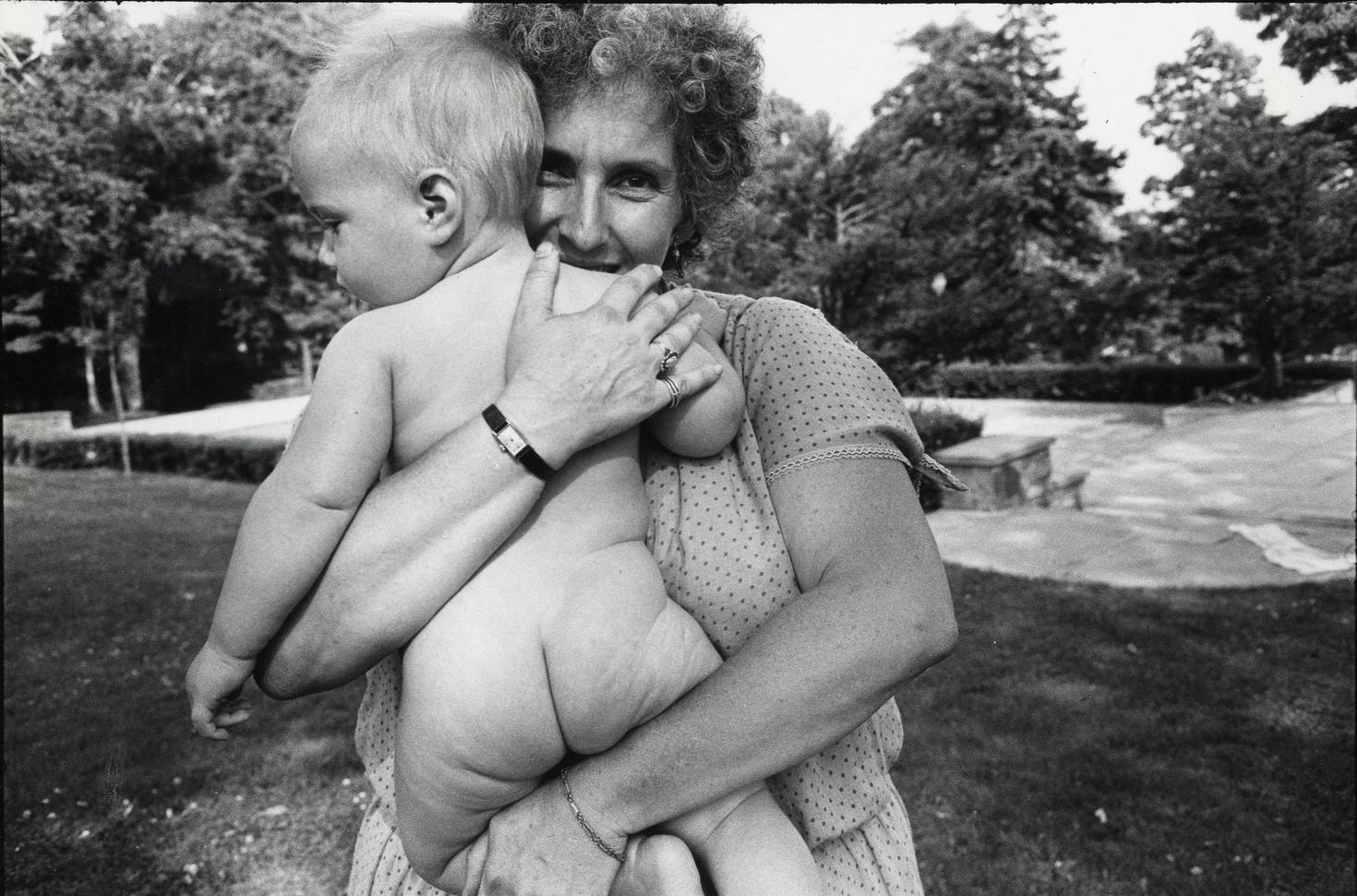
“I found being a mother, personally, shocking. I was not experienced with babies. I had this idea that you cut the umbilical cord and then you are a separate person again. It wasn’t so.”
Greta Hofmann Nemiroff
Nemiroff had had an abortion at 18 – something she has always been very open about – and she did not want to go through that again. So she went ahead with her next pregnancy, but the experience of caring for a baby was so overwhelming that she waited nine years to have her second child – unusual for her generation – and then three more years before having her third. She didn’t realize until later, she says, that her hesitation was due to deep feelings of ambivalence toward motherhood and the sacrifices it demands.
Between babies, Nemiroff embarked on a teaching career and soon realized the unequal challenges faced by working mothers, compared to fathers. In 1970, Nemiroff introduced a new course at Sir George Williams University (now Concordia) with her colleague Christine Allen Garside, also a mother of a young child. “The Nature of Woman: Historic Attitudes and Recent Approaches” was the first Women’s Studies course offered at a Canadian university.
By this point, Nemiroff had become an activist in the pro-choice movement, and she remembers being struck by the new attitudes towards motherhood among the younger activists and her students:
“I wasn’t at all aware of the depth of my own ambivalence,” Nemiroff says. “When I started working with other women in the women’s movement, it became very clear. First of all, to my shock, there were piles of young women in the early ’70s who said they didn’t want, under any circumstances, to have children.”
They saw motherhood, Nemiroff says, “as oppression, and as just tying you down. They wanted to be free. The whole notion of being free was very new.”
Nemiroff taught feminism-inspired courses at Vanier College and at the New School at Dawson College, intermittently directing that school until 1991. She served as joint chair of Women’s Studies programs at uOttawa and Carleton University from 1991 to 1996 and then returned to teach at Dawson in 1996, where she was appointed Coordinator of Creative Arts, Language and Literature from 1999 to 2013, as well as Coordinator of Women’s Studies from 1996 to her retirement in 2015.
Throughout her long career as an educator, speaker, and organizer, Nemiroff witnessed the many painful struggles of the women’s movement around the issue of motherhood. “All feminists wanted to improve the quality of women’s lives, including “stay-at-home” and working mothers, but all did not agree on how to achieve that goal.”
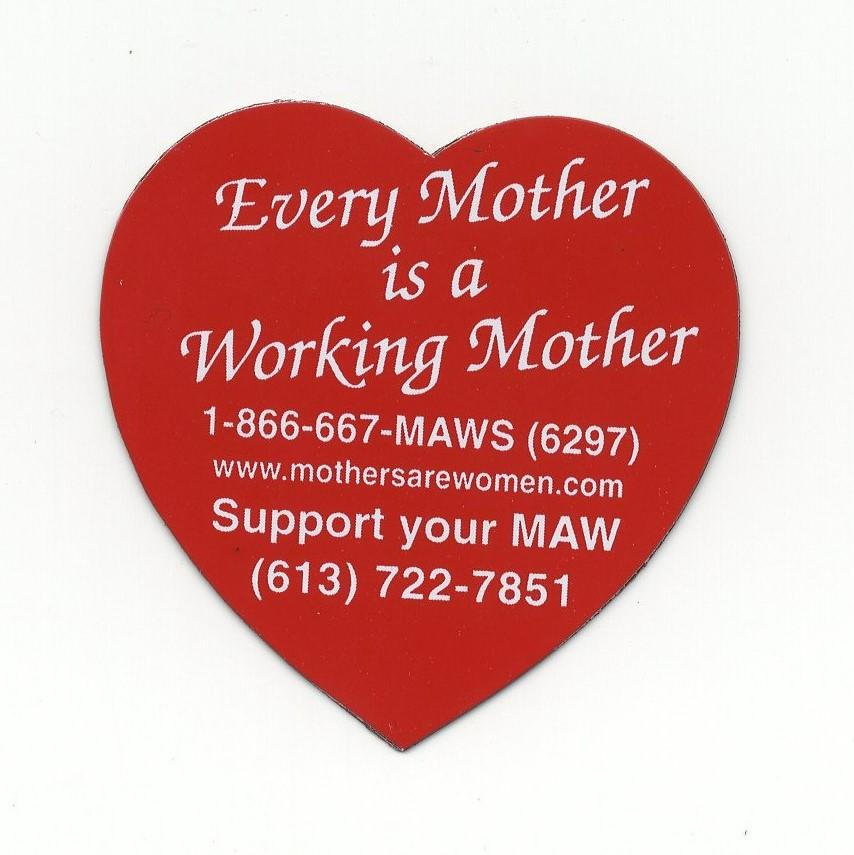
Differing visions of motherhood
In a fascinating paper, University of Victoria history professor Lynne Marks and her co-authors delved into the Canadian Women’s Archives to explore the differing visions of motherhood during the second wave of the women’s movement. They describe motherhood as a “significant fault line” between the mainstream women’s movement and certain marginalized feminist groups representing, for example, single mothers on welfare.
The paper, published in 2016 in the Women’s History Review, explains how the policies of the National Action Committee on the Status of Women (NAC) sometimes clashed with the philosophies of groups like the Mother-Led Union, the Family Benefits Work Group, the Mothers Action Group, the Welfare Rights Coalition and Wages For Housework.
Mothers active with welfare rights groups, the paper notes, supported NAC and other mainstream feminist groups in their demands for state-funded childcare and adequate retraining options, which would permit single mothers to enter the workforce, if they wished. But the welfare rights groups also fought for the right of women to stay home to raise their children, and to receive reasonable levels of state support to do so.
Activists representing low-income women presented “a clear class and gender-based challenge to the state which increasingly sought to force them into the paid workforce, and they had little positive to say about mainstream feminists who also believed that poor mothers should enter the paid workforce for their own good,” Marks and her colleagues wrote.
While the mainstream of the women’s movement seized on access to safe abortions as an issue all feminists would support, some groups felt the focus on that issue detracted from their demands for support to raise the children they had or wanted to have.
“For immigrant, black, indigenous women and women of colour, access to abortion […] is important but it’s not everything,” says Julia Aguiar, a Queen’s University masters candidate whose research focuses on the politics of motherhood and family in second wave feminism. “‘We also need better access to daycare,’ they said. ‘We need a livable wage, and we need to stop the sterilization of indigenous and women of colour which is very much ongoing.’”
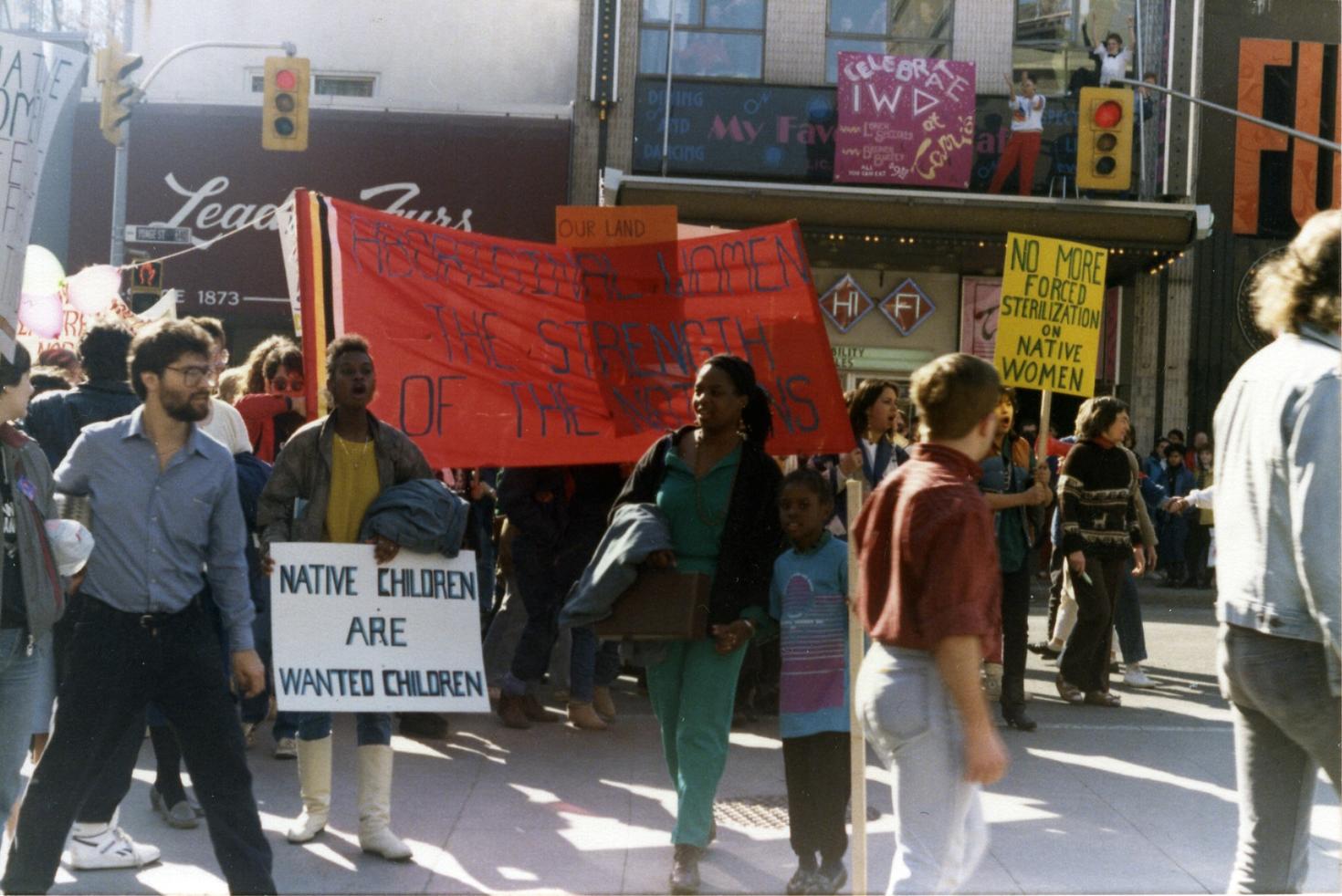
Groups like Wages due Lesbians aligned themselves with that criticism. They supported abortion rights, but they wanted the movement to focus at least as much energy on issues like fair pay for women, subsidized daycare, and wages for stay-at-home mothers, so that mothers could live independently from men if they chose to, and still support their children.
The Lesbian Mothers’ Defence Fund, founded in 1979 in Toronto, worked hard to help lesbian mothers gain or keep custody of their children after divorce, says Constance Crompton, Canada Research Chair in Digital Humanities at uOttawa and co-director of the Lesbian and Gay Liberation in Canada (LGLC) project, a digital resource for the study of lesbian, gay, bisexual, and transgender history in Canada.
Getting legal advice and support in custody battles “changed women’s lives” and allowed lesbian mothers to come out of the closet without fear of losing their children, Crompton said. Yet these struggles would be largely forgotten without the Women’s Archives, she notes.
The key to accurate history
The Women’s Archives includes evidence of the activities of short-lived women’s groups that may not have had the money to publicize their events in magazines. She has found notices for all kinds of gatherings, “like consciousness-raising groups, or like flyers for vegetarian potlucks for lesbian mothers where children are welcome, etc., that are much more ephemeral and don’t end up in (mainstream or queer men’s) periodicals,” says Crompton, adding she chose to work at uOttawa because of the Women’s Archives.
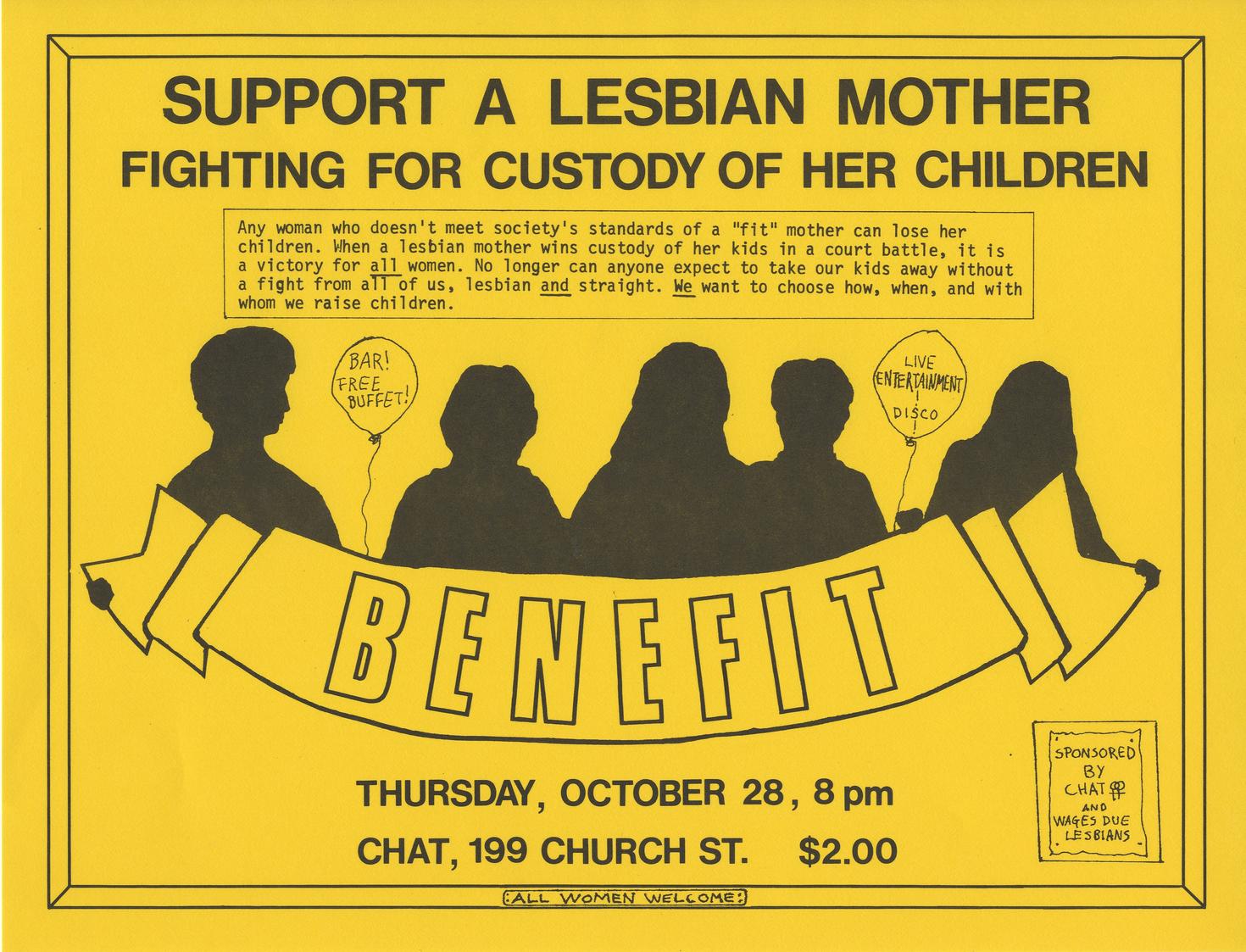
“That’s what they have here…the circulars, the handouts that people were giving out at protests that help us find events that centred around women’s experience.”
Constance Crompton
Archiving these materials is key to accurate history. Lesbian activists, for example, were often rejected or “invisibilized” by the mainstream of the women’s movement.
Nemiroff claims that some feminists in the ’70s and ’80s seemed convinced that if the lesbians in their groups spoke out and were open about their sexual orientation, all feminists would be assumed to be homosexual, and this scared them. She recalls giving a keynote speech at a conference in the late ’80s in Banff and paying tribute to the important contributions of lesbians to the women’s movement. Afterwards, several conference goers threatened to leave in protest, she says.
That shunning, or at least quietening, of lesbian voices within the movement continued right into the 1990s, says Mona Greenbaum, director of the LGBT+ Family Coalition, a Quebec group that lobbied successfully for lesbian couples to have access to fertility clinics, among other accomplishments. Before founding her group in 1998, Greenbaum recalls being “invisibilized” as part of a large lesbian contingent working with the Fédération des femmes du Québec (FFQ).
“That was true in Quebec right up until the 2000s,” says Greenbaum. “They totally didn’t want to be associated with us. I think it started to change around 2003 and 2004. They really didn’t want to acknowledge our presence and yet there were so many lesbians working within and with the FFQ.”
The Women’s Archives provide plenty of evidence that progressive movements were never immune to oppression within their ranks.
The paradox of motherhood
The late Helen Levine, who helped establish Ottawa’s first shelter for women experiencing intimate partner violence, spoke eloquently about sexism in the progressive movements of the last century.
Like Nemiroff, Levine came to the women’s movement later in life, as she grew disillusioned with the vision of motherhood popular in the 1950s.
“The message was that you were the handmaiden of the family and that you were there to live vicariously through other people, through your husband and through your children,” Levine says in the 1994 NFB documentary Motherland: Tales of Wonder.
Born in 1923, Levine had married young and stayed home to raise her two girls until they were both in school. She then went to work part-time as a social worker. As her kids became teenagers, Levine began to feel trapped and unfulfilled.
“The kids were becoming rebellious, Gill (Levine’s husband) was very busy with the labour movement, travelling a lot. And I had been working part-time but because I had never really faced up to investing myself in my own work and in looking for things that were important to me in my own work, I was kind of still on the margins there too. And gradually I just sank into despair.”
Levine sank so far into despair that she had to be hospitalized for several months in 1973. After she was discharged, she could not return to her previous life. She found herself questioning the role of women in the world, not only as mothers but in the progressive movements such as the labour, nuclear disarmament, and anti-war movements.
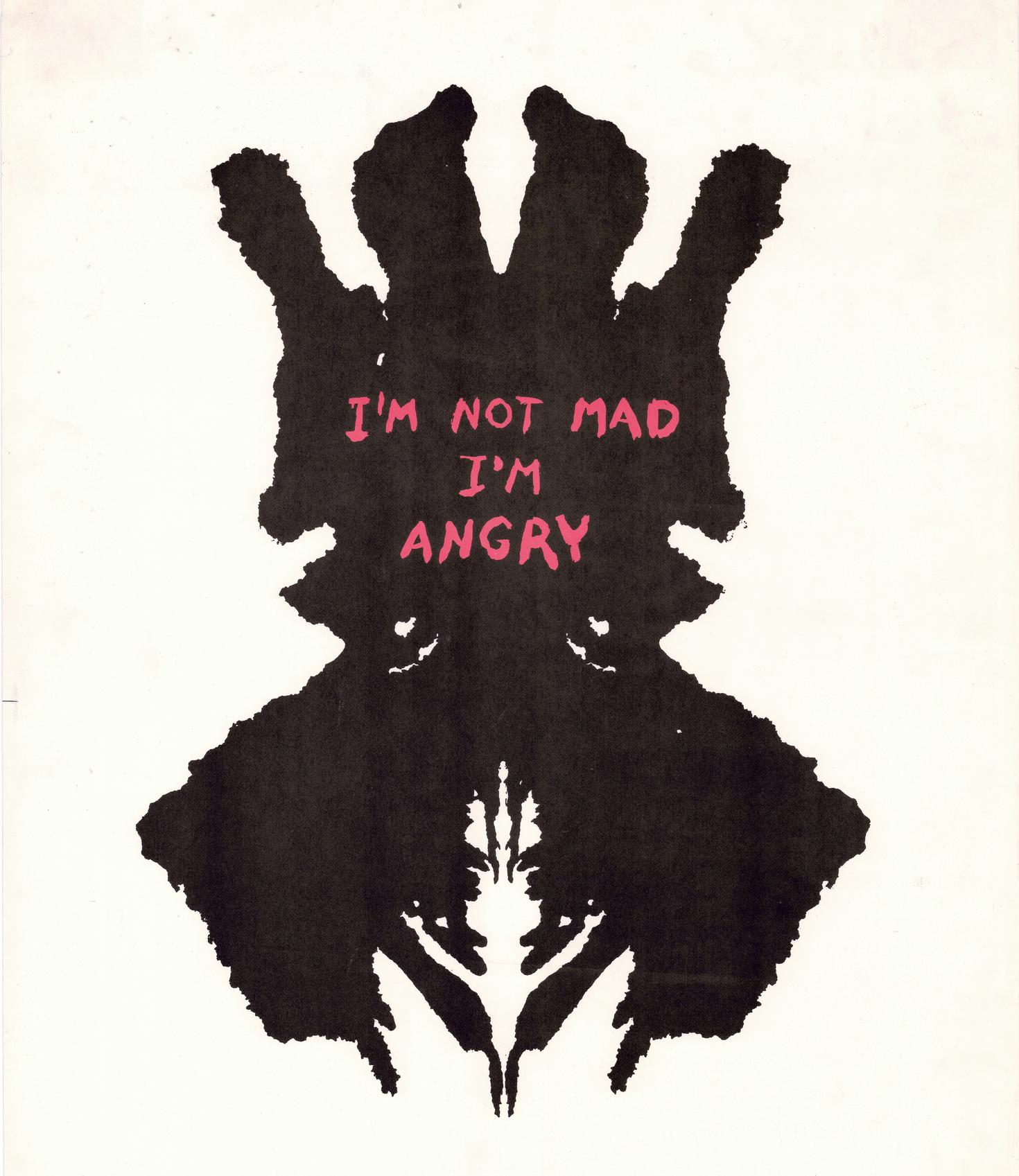
“There was no way I could go back to what I was,” she explains in the documentary. “I knew that. I couldn’t be the handmaiden. I couldn’t be the assistant. Because all the women had been the assistants politically too. I mean it all sounds great, you know; we were hot left-wingers and activists, but it was the guys who were in charge and the women who did all the shit work. And it was replicated at home in many ways. I knew I couldn’t do that anymore even if I wanted to.”
Levine made changes in her home life, letting her family know that her career was important, and she would no longer be the sole homemaker. Her husband took on a greater share of the housework and all the cooking, and Levine went on to become a professor at Carleton University’s School of Social Work from the mid-1970s until 1988.
There she thrived, introducing feminism into the curriculum. After retiring, Levine pioneered feminist counselling and gave workshops and speeches on feminism and domestic violence.
Helen Levine died in 2018 at the age of 95. On her deathbed, she told her children that despite her conflicted feelings about motherhood, “I loved being your mum.”
“We always knew that,” says Levine’s eldest daughter Tamara, a retired educator and writer. “She railed against the institution and all of its proscriptions and what it meant for women’s lives. And at same time she really did love being our mum. And […] it was a bit of a paradox. And any of us who are also mums live it every day.”
The women’s movement continues to wrestle with how best to support all women’s choices around motherhood and improve the lives of all mothers. The Canadian Women’s Archives continues to gather and push the evidence of that ongoing endeavour out of the shadows and into the light.

